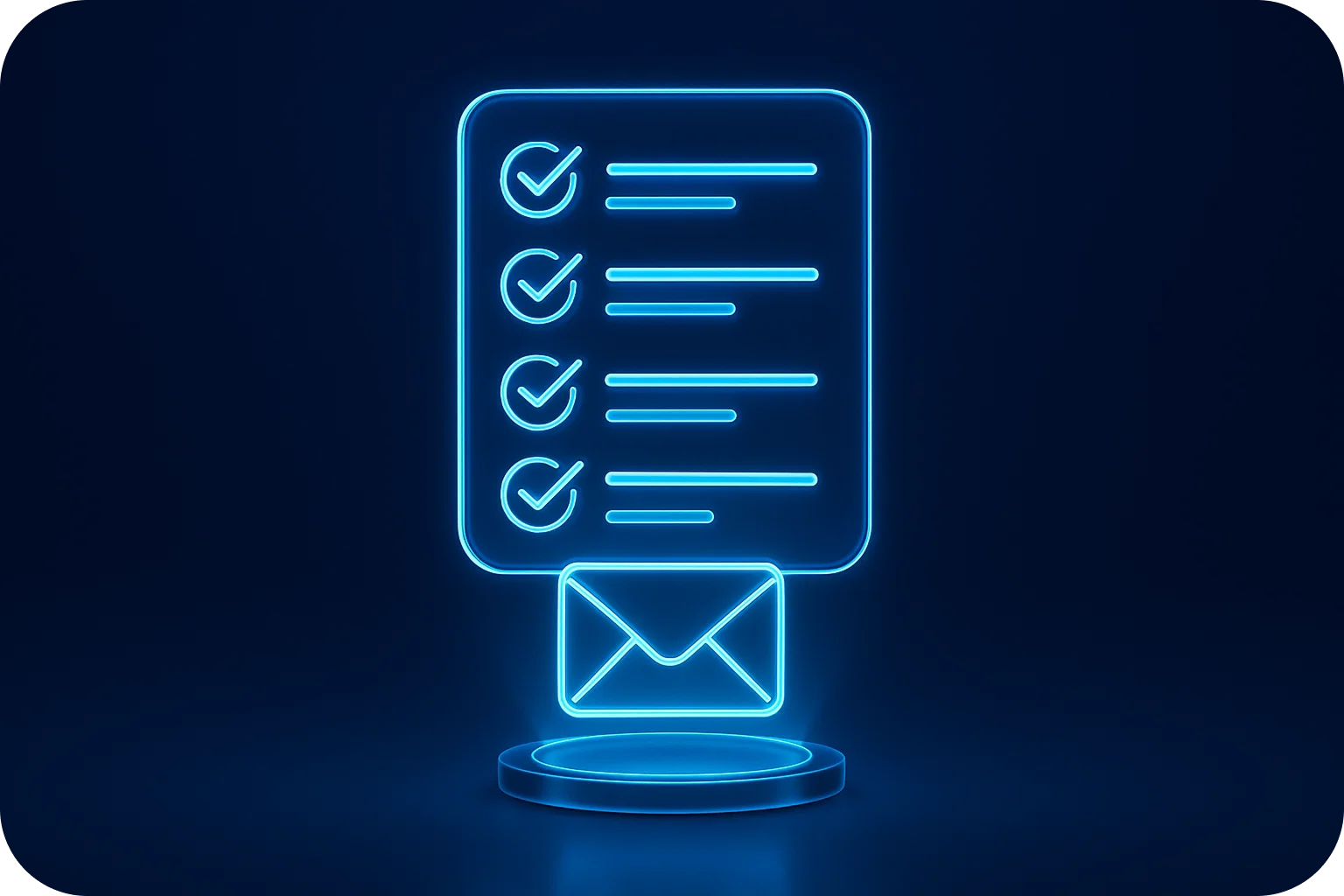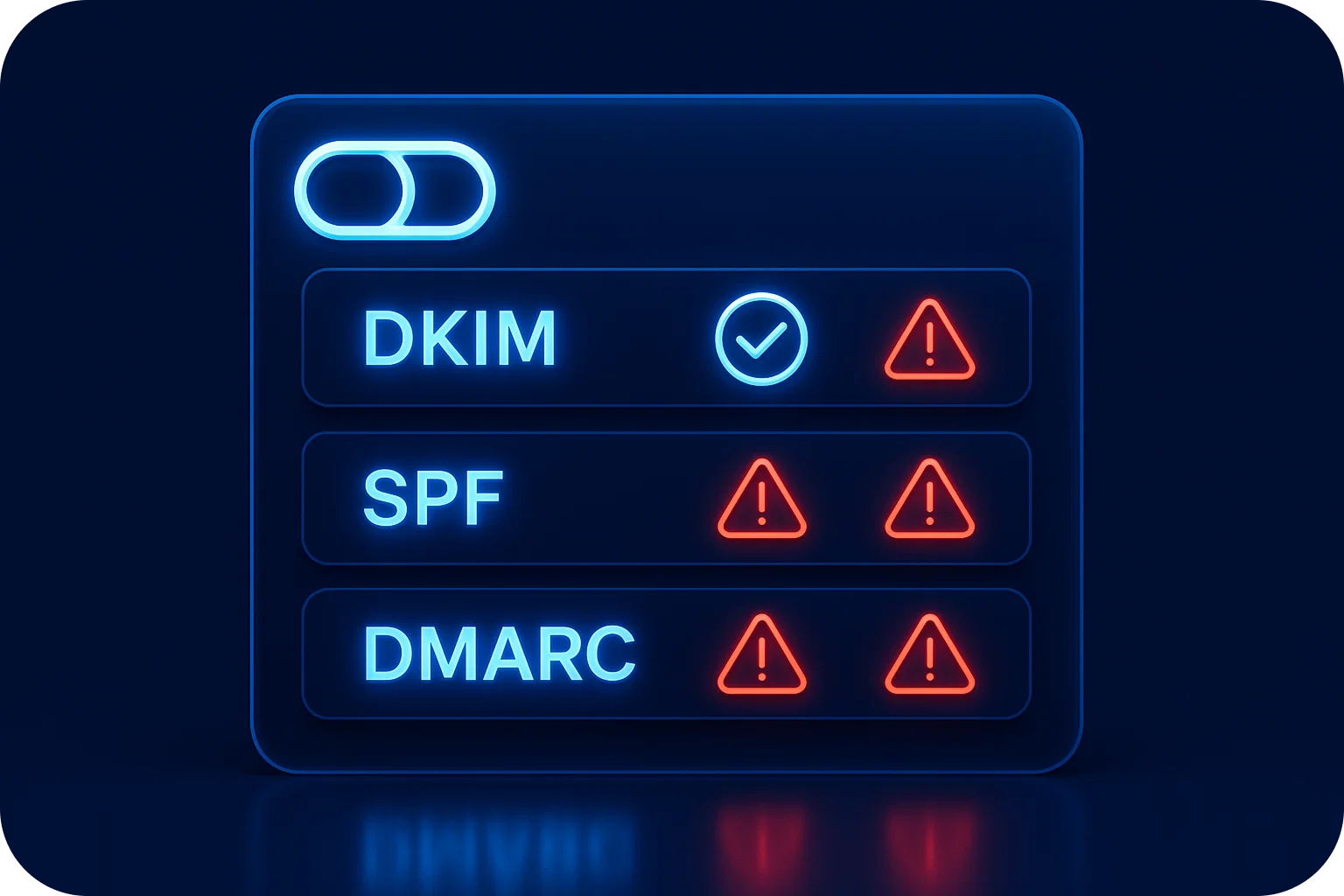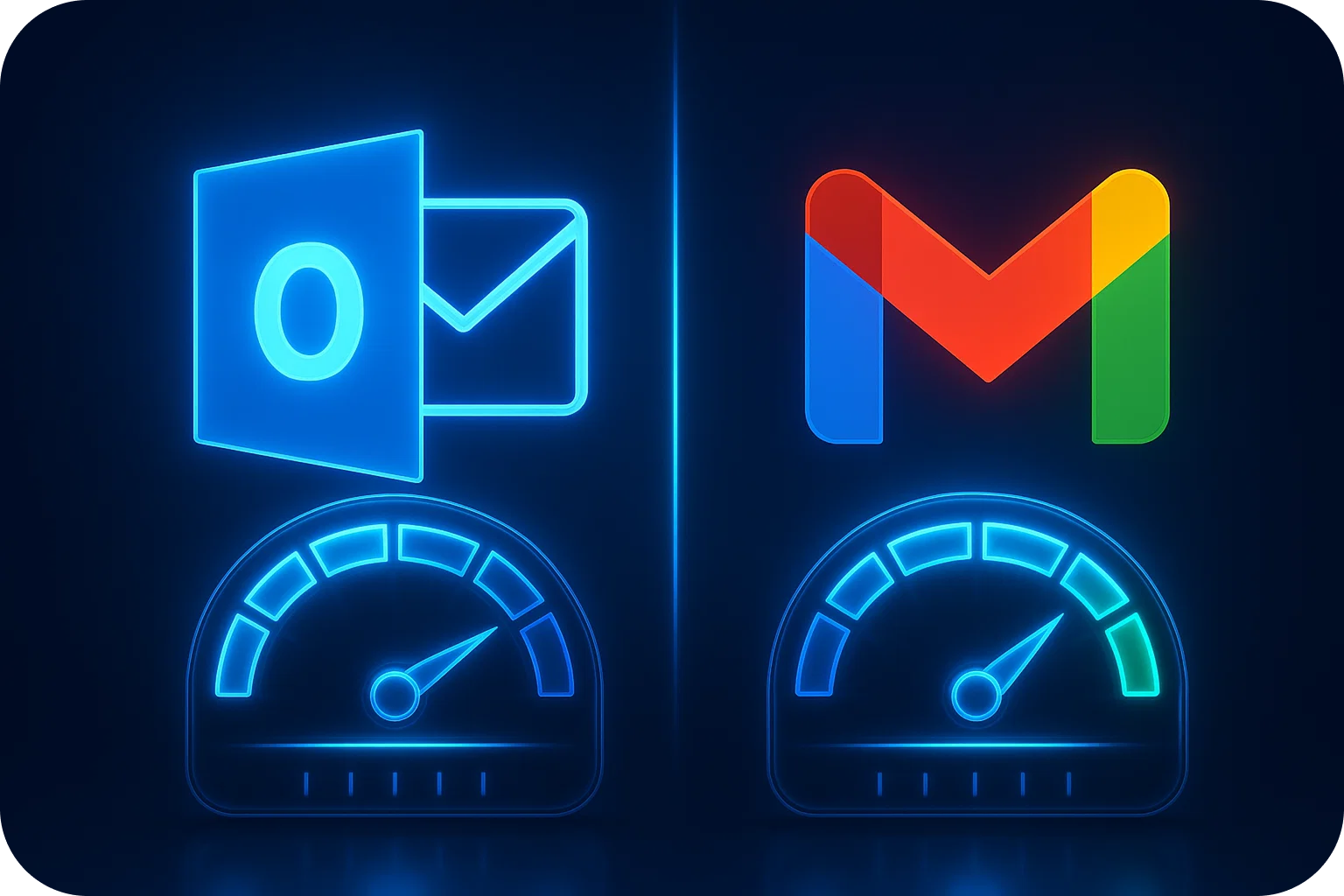Domain Rotation Strategies That Keep You Out of Spam Forever
.png)
Picture this: You've crafted the perfect cold email campaign, your targeting is spot-on, and your message resonates with your audience. But there's one problem: your emails are landing in spam folders instead of inboxes. Sound familiar?
If you're sending high-volume cold emails without a proper domain rotation strategy, you're essentially playing Russian roulette with your sender reputation. One wrong move, and your primary domain could be blacklisted, taking your entire business communication down with it.
Domain rotation isn't just a nice-to-have; it's an essential strategy that separates successful cold email campaigns from those that crash and burn. In this comprehensive guide, we'll explore proven domain rotation strategies that will keep your emails out of spam folders and your sender reputation intact.
Understanding Domain Rotation: The Foundation of Email Deliverability
What is Domain Rotation?
Domain rotation is the strategic practice of distributing your email sends across multiple domains to prevent any single domain from being overwhelmed with outbound messages. Think of it as spreading your risk across multiple assets rather than putting all your eggs in one basket.
Instead of sending 1,000 emails from one domain, you might send 200 emails each from five different domains. This approach helps maintain a healthy sender reputation across all domains while maximizing your overall deliverability rates.
Why Traditional Single-Domain Approaches Fail
Email service providers (ESPs) like Gmail and Outlook are constantly monitoring sending patterns. When they see a sudden spike in volume from a new domain, red flags go up immediately. Here's what happens:
- Volume Triggers: Sending too many emails too quickly from one domain signals spam behavior
- Reputation Damage: One bad campaign can taint your entire domain's reputation
- Deliverability Decline: ESPs start routing your emails to spam or blocking them entirely
- Recovery Challenges: Rebuilding a damaged domain reputation can take months
The Science Behind Effective Domain Rotation
ESP Filtering Mechanisms
To build an effective rotation strategy, you need to understand how ESPs evaluate your emails:
Domain Reputation Scoring: ESPs assign reputation scores to domains based on sending history, engagement rates, and complaint levels. New domains start with neutral scores that can quickly swing positive or negative based on initial sending behavior.
Volume-Based Filtering: Sudden volume spikes from any domain trigger additional scrutiny. ESPs expect gradual volume increases over time, not immediate high-volume sending.
Pattern Recognition: Advanced algorithms detect patterns in sending behavior. Rotating domains randomly without a strategy can actually hurt your deliverability if done incorrectly.
The Optimal Rotation Ratio
Based on extensive testing and industry best practices, here's the golden ratio for domain rotation:
- Maximum 20 emails per domain per day for new domains
- 3-5 domains minimum for any serious cold email operation
- Maximum 5 email accounts per domain to maintain authenticity
- 4-week warm-up period before reaching full sending capacity
Building Your Domain Rotation Infrastructure
Domain Selection Strategy
Not all domains are created equal. Here's how to choose domains that will support your rotation strategy:
Domain Age and Authority:
- Purchase domains from reputable registrars
- Consider aged domains with clean histories
- Avoid domains with previous spam associations
- Ensure domains have proper WHOIS information
Domain Naming Conventions:
- Use variations of your main brand (company-mail.com, company-outreach.com)
- Keep names professional and business-appropriate
- Avoid hyphens, numbers, or suspicious-looking combinations
- Ensure domains are easy to spell and remember
Technical Setup Requirements
Proper technical configuration is crucial for domain rotation success:
DNS Configuration:
- SPF Records: Configure Sender Policy Framework to authorize your sending IPs
- DKIM Signing: Implement DomainKeys Identified Mail for message authentication
- DMARC Policy: Set up Domain-based Message Authentication for additional security
- MX Records: Ensure proper mail exchange records are in place
Email Account Setup:
- Create 3-5 email accounts per domain maximum
- Use realistic names and professional signatures
- Set up proper autoresponders and out-of-office messages
- Configure proper forwarding to the centralized inboxes
Advanced Rotation Strategies That Work
The Progressive Volume Strategy
This approach gradually increases sending volume across your domain portfolio:
Week 1-2: Send 5-10 emails per domain per day
Week 3-4: Increase to 10-15 emails per domain per day
Week 5-6: Scale to 15-20 emails per domain per day
Week 7+: Maintain 20 emails per domain per day maximum
This gradual approach helps establish a positive sender reputation while avoiding volume-based triggers.
The Time-Based Rotation Method
Distribute your sends across different time zones and hours:
- Morning Batch (8-10 AM): Domains 1-2
- Midday Batch (12-2 PM): Domains 3-4
- Afternoon Batch (3-5 PM): Domains 5-6
This strategy mimics natural business communication patterns and reduces the likelihood of triggering spam filters.
The Engagement-Based Rotation
Monitor engagement metrics and rotate based on performance:
- High-performing domains: Maintain consistent volume
- Medium-performing domains: Reduce volume temporarily
- Low-performing domains: Pause and investigate issues
Monitoring and Maintaining Your Rotation Strategy
Key Metrics to Track
Success in domain rotation requires constant monitoring of these critical metrics:
Deliverability Metrics:
- Inbox Placement Rate: Aim for 95%+ across all domains
- Spam Folder Rate: Keep below 5% for each domain
- Bounce Rate: Maintain under 2% to preserve reputation
- Unsubscribe Rate: Monitor for unusual spikes
Engagement Metrics:
- Open Rates: Track by domain to identify issues
- Click-Through Rates: Monitor for engagement quality
- Reply Rates: Positive engagement signals to ESPs
- Complaint Rates: Critical for reputation management
Early Warning Systems
Set up alerts for these red flags:
- Sudden drops in deliverability rates
- Increases in bounce rates above 3%
- Spam complaint rates above 0.1%
- Blacklist appearances on major lists
Common Domain Rotation Mistakes to Avoid
The "Set It and Forget It" Trap
Many teams set up domain rotation and never monitor performance. This passive approach leads to:
- Undetected reputation damage
- Continued sending from compromised domains
- Gradual decline in overall deliverability
Over-Rotation Syndrome
Using too many domains can actually hurt your efforts:
- Diluted domain authority
- Increased management complexity
- Higher costs without proportional benefits
- Suspicious sending patterns
Inconsistent Warm-Up Practices
Skipping or rushing the warm-up process is a critical error:
- Immediate high-volume sending triggers spam filters
- New domains need time to establish a reputation
- Rushed warm-up can permanently damage domain reputation
Advanced Tips for Maximum Effectiveness
The Content Variation Strategy
Don't just rotate domains, rotate content too:
- Create 3-5 email templates with different messaging angles
- Vary subject lines, even for the same campaign
- Use different sender names across domains
- Adjust email length and formatting
Integration with Email Warm-Up Services
Combine domain rotation with systematic warm-up:
- Use warm-up services to build an initial reputation
- Gradually introduce cold email sends
- Maintain warm-up activities even during active campaigns
- Monitor warm-up metrics alongside campaign performance
Seasonal Rotation Adjustments
Adapt your strategy based on seasonal patterns:
- Holiday Periods: Reduce volume as engagement drops
- Back-to-School Season: Increase B2B sending as activity resumes
- End of Quarter: Prepare for higher volumes with additional domains
Scaling Your Domain Rotation Strategy
When to Add More Domains
Scale your domain portfolio when you experience:
- Consistent 95%+ deliverability across existing domains
- Need to increase overall sending volume
- Expansion into new market segments
- Geographic expansion requires local domains
Enterprise-Level Considerations
Large-scale operations require additional considerations:
- Dedicated IP Management: Consider dedicated IPs for high-volume domains
- Geographic Distribution: Use local domains for international campaigns
- Team Management: Implement clear protocols for domain usage
- Compliance Requirements: Ensure all domains meet regulatory standards
The Future of Domain Rotation
Emerging Trends
Stay ahead of the curve with these developing trends:
- AI-Powered Rotation: Machine learning algorithms optimizing rotation patterns
- Real-Time Reputation Monitoring: Instant alerts and automatic adjustments
- Integrated Warm-Up Systems: Seamless combination of warm-up and rotation
- Enhanced Authentication: New standards for domain verification
Your Path to Spam-Free Success
Domain rotation isn't just a technical strategy; it's your insurance policy against deliverability disasters. By implementing the strategies outlined in this guide, you're not just protecting your current campaigns; you're building a sustainable foundation for long-term cold email success.
Remember these key takeaways:
- Start with 3-5 domains and scale gradually
- Never exceed 20 emails per domain per day
- Implement proper warm-up procedures for all domains
- Monitor performance metrics religiously
- Adapt your strategy based on results and industry changes
The difference between successful cold email campaigns and those that fail often comes down to infrastructure. With proper domain rotation strategies in place, you'll join the ranks of companies achieving 95%+ deliverability rates while scaling their outreach efforts without fear of spam folder exile.
Your sender reputation is your most valuable asset in the world of cold email. Protect it, nurture it, and watch your campaigns consistently land where they belong in your prospects' inboxes.
More articles
Get started now




%201.png)





